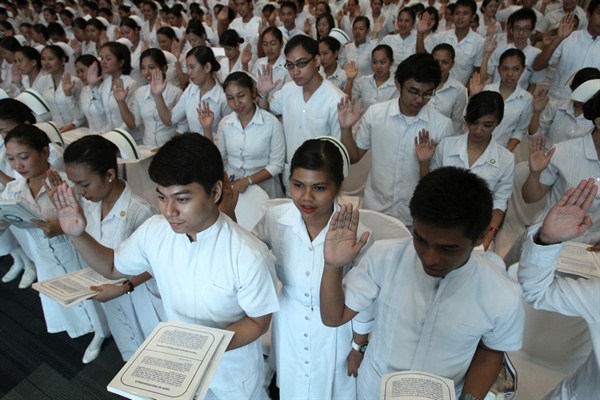The Philippines’ labor export system is a potential model for other developing countries. But there are concerns about how Filipino migrants are treated abroad, as well as the potential effects of a skills drain at home.
In the 1970s, in order to address an escalating unemployment rate and balance of payments crisis, the Philippine government adopted a comprehensive range of policies that, among other things, systematically encouraged the export of contract labor from throughout the country. The program, developed during the long military dictatorship of Ferdinand Marcos, was rationalized as a temporary measure to address the country’s immediate problems.
Four decades later, and after a series of democratically elected governments, the Philippines' labor export program is still very much in place. In 2013 alone, 1.8 million temporary migrant workers fanned out to more than 190 countries, each one bearing an employment contract issued and certified by the Philippine government. From factory and domestic workers to engineers and nurses, Filipinos fill a wide range of jobs in foreign labor markets.

